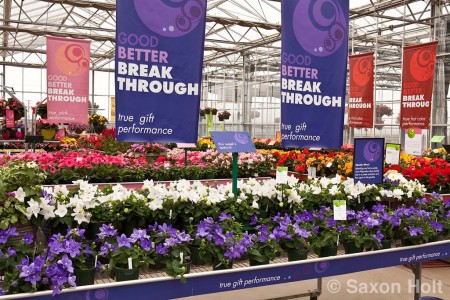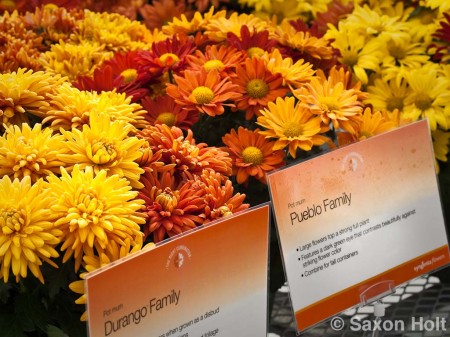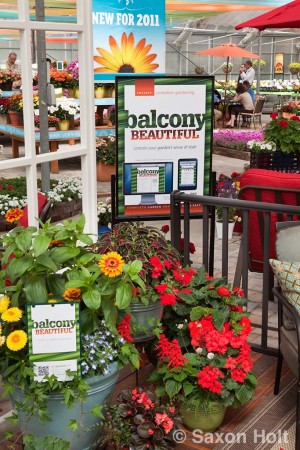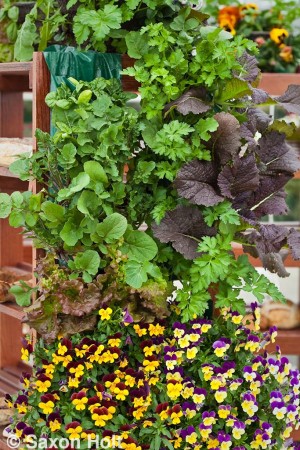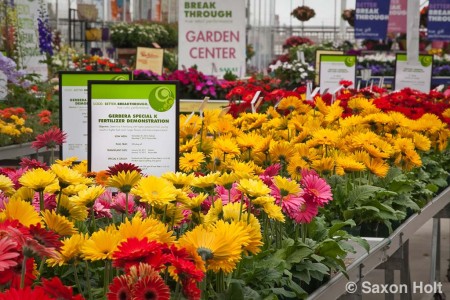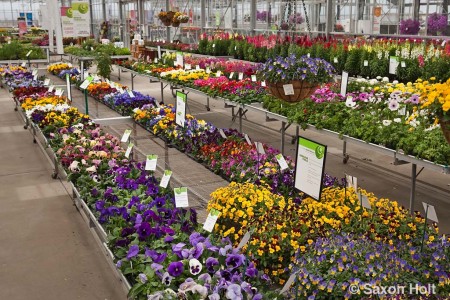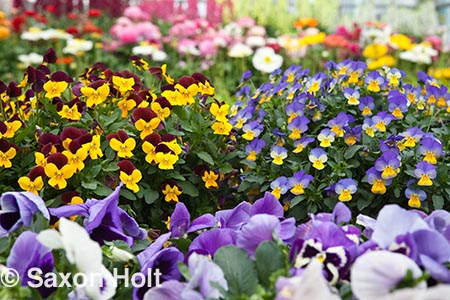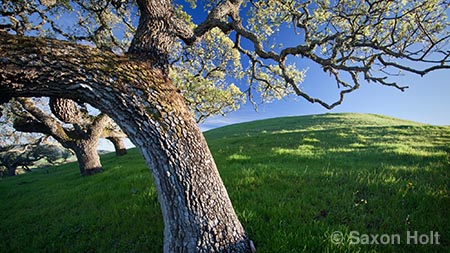 For someone who loves flowers as much as I do, going to the California Spring Trials can be a surreal experience. It is a trip into the high tech world of germplasm, growth hormones, growth inhibitors, and secret breeding techniques for incredible flowers – that are decidedly not wild.
For someone who loves flowers as much as I do, going to the California Spring Trials can be a surreal experience. It is a trip into the high tech world of germplasm, growth hormones, growth inhibitors, and secret breeding techniques for incredible flowers – that are decidedly not wild.
One of the reasons I blog here at Gardening Gone Wild is to promote wild, natural, uninhibited gardening, much like my own garden, now at the height of the weed season. Wild is OK. We don’t expect perfection.
So, facing the abundant perfection of flowers at the Spring Trials, I don’t for a minute imagine any of these beauties in my own garden. But millions do. These flowers end up in WalMart and Lowes. They are sold on QVC television, where SunPatiens alone sell by the millions of 2″ pots.
Beauty is good. Let us not be judgmental about who plants out all these annual bedding plants, or how far from wild flowers they may be. But I do admit, it is mind numbing to contemplate that many of these are test tube creations, only available as germplasm, which may be rooted in Guatemala, grown to potting size in Ecuador, and “finished” in Southern California.
I will not for a minute longer wonder what amount of resources are lavished on this industry. Here is the pursuit of beauty. Big corporate business ? This is not Haliburton, BP, City Bank, or Monsanto after all. If you do want a real inside story of the flower industry, I refer you Flower Confidential by Amy Stewart.
Here, at the California Spring Trials, I am a kid in a candy store; a garden photographer hyperventilating on visual overload. If you have ever drooled over the macro photographs of exquisite flower close ups in calendars or books like Alan Detrick‘s, and wondered why the heck you can never find perfect flowers to photograph like the ones you see in the slick magazines, it is because many of those photos are the result of garden photographers’ feeding frenzy at Spring Trials.
The photos we take here are the ones that get chosen when publishers need some eye candy. Yes, the camera always lies, and flowers don’t really look like this in real gardens, but wouldn’t you rather we feed the fantasy of what we ‘think’ we see when we admire a flower ? Besides, photographers just can’t help ourselves when the breeders tempt us so. We are like bees on honey.
I ran into some colleagues from the Dutch photo agency Visions at the Sygenta display and we challenged ourselves to interpret one flower, with one photograph. A flower photographer shoot out. We chose a marvelous Pot Mum “Pueblo”, with the only rules we could not move the plants. Stay tuned and I will show the results here in a future posting, and let you guys chose the “winner”.
Most of my time at the Spring Trials was not spent taking close-up flower shots however. When you realize how many professional photographers are taking great photos, one quickly realizes there is only so big a market for these things. So I do spend time freshening up my stock, look for new trends and plants . . . and do what my clients ask me to do. More on that in a bit, but one of the clear winners in garden trends is edibles and small space gardening.
I am sure it is no surprise to followers of the popular Life on the Balcony blog from Fern Richardson that the garden world is picking up on balcony gardening. Here is proof it will be mainstream before too long:
And vertical gardening is now a recognized trend. New books from Rodale by Derek Fell and Cool Springs Press Garden Up! authors Rebecca Sweet and Susan Morrison surely will entice gardeners to use garden pouches filed with edible greens or compact flowers.
Most of my time was spent photographing new and experimental flowers for my clients Sakata and Oro Farms. With so many corporate spies no doubt following Gardening Gone Wild, I can not reveal what new wonders they are working on, but I was certainly impressed with the amount of science that goes into growing perfect flowers.
After admiring the beautiful clear colors of the Sakata Gerberas, and mentioning they are my wife’s favorite cut flower, I found 8 big cardboard boxes, each with about a dozen pots like the ones seen in the photo below, by my truck when I left my last day. Sad to say only seven boxes could fit.
It turns out Sakata has written “the” book of Gerbera cultivation, down to germination times, rooting sizes, day length propagation studies, and temperature variables in greenhouses. But they were particularly proud of the new Pansies.
I suppose I was expected to get excited by the big new Majestic Giants, but I just love the little ones.
Sakata calls these their Rebelina series. And I can grow these. They even remind me of the yellow flowered California native, Viola pedunculata – Johnny Jump Up, which were blooming in the wild hills of Monterey County outside the greenhouses.
Believe me, the Violas are there, but after shooting all those flower close-ups, at the end of the day I would rather shoot big oaks and rolling hills. I do need the wild.

